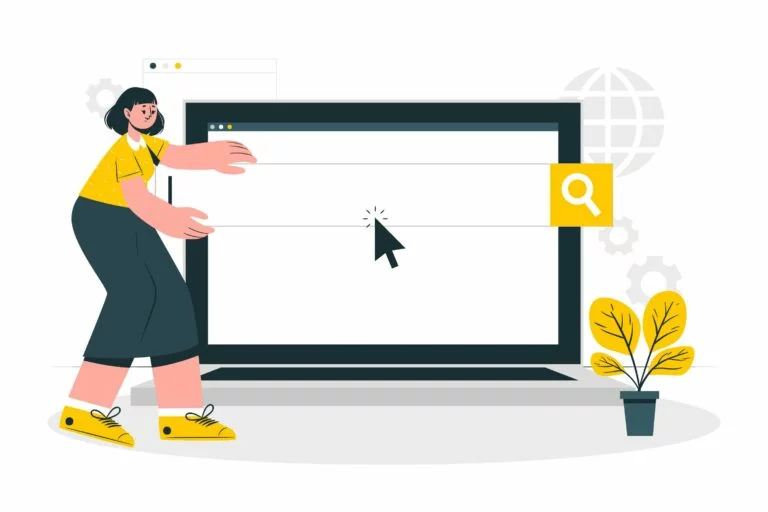Browsewrap and clickwrap agreements are ways websites get users to agree to their rules. They’re important for making a legal connection between the website and the user. But they work differently.
Clickwrap agreements make users actively agree to the rules. They have to click a button or checkbox to say they accept. This makes sure users know what they’re agreeing to before they use the website.
Browse-wrap agreements assume users agree just by using the website. The rules are usually hidden at the bottom or side of the page, and it’s assumed users know about them because they’ve used the site.
Businesses need to understand these types of agreements because they affect how they can enforce their rules online. This guide will explain what browsewrap agreements are, how they’re different from regular contracts, whether they’re legally strong, how to make good ones, and their pros and cons. It will also talk about where these agreements might be going in the future and answer common questions businesses might have.
Understanding Browsewrap Agreements
In today’s digital world, websites often use browsewrap agreements to make legal connections with their users. This type of agreement assumes that users agree to the rules just by using the website, without needing to click a button or check a box like with clickwrap agreements.
A typical browsewrap agreement includes the website’s rules like terms of use and privacy policy. These rules are usually linked at the bottom or side of the website, so users can easily find them. By using the website, users are considered to agree to these rules.
However, whether these agreements are legally strong is still debated. Courts sometimes question if users agreed to the rules since they didn’t actively indicate their agreement.
For a browsewrap agreement to count as legally strong, it has to follow some rules. The website owner needs to make sure users can see the rules, users need to keep using the website even after seeing the rules, and there has to be something valuable exchanged between the website and the user.
Related Article: What Are Sign-In Wrap Agreements? Key Strategies For Success
Clickwrap vs Browsewrap

Clickwrap and browsewrap are two common methods used by websites to obtain user consent to their terms and conditions. While both methods serve the purpose of establishing legal relationships with users, there are significant differences between clickwrap and browse-wrap agreements.
Clickwrap agreements require users to take an affirmative action, such as clicking a checkbox or button, to indicate their acceptance of the terms. This method ensures that users actively acknowledge and agree to the terms before accessing the website’s products or services.
Unlike clickwrap agreements, where users have to actively agree to the terms, browsewrap agreements just assume users agree by using the website. The terms and conditions are usually linked at the bottom or side of the website, so users can easily find them.
Similarities between clickwrap and browsewrap
- Online consent: Both of these agreements are used to obtain user consent to the terms and conditions of a website or service.
- Legal relationships: Both types of agreements establish legal relationships between the website or service provider and the user.
- Hyperlink usage: Both agreements often involve the use of hyperlinks to provide users with access to the terms and conditions.
- Legally binding: When properly implemented and meeting legal requirements, both clickwrap and browsewrap agreements can be legally binding.
Differences between clickwrap and browsewrap
Consent acquisition: Clickwrap agreements need users to do something like clicking a box or button to say they agree to the rules. But with browsewrap agreements, it’s assumed users agree just by using the website.
Clickwrap makes users actively agree, while browsewrap assumes agreement. This means clickwrap is more direct, while browsewrap is more indirect. Both are ways to make sure users know the rules, but they work differently.
Enforceability: Clickwrap agreements are usually easier to enforce than browsewrap agreements because they show clearer proof that users agreed to the rules.
User experience: Clickwrap agreements can make more of an impact on how users feel because they have to do something extra to say they agree. But browsewrap agreements are usually less bothersome and don’t interrupt what users are doing.
Related Article: What Is Clickwrap Agreement: An Effective Guide In 2024
Legal Framework for Browsewrap Agreements

Browsewrap agreements operate within a legal framework that encompasses various laws and regulations. The specific legal requirements can vary depending on the jurisdiction and the nature of the website or service. Some key aspects of the legal framework for browsewrap agreements include:
GDPR compliance: In the European Union, these agreements must comply with the General Data Protection Regulation (GDPR). The GDPR requires explicit opt-in consent and places strict requirements on data privacy and protection.
United States laws: In the United States, these agreements must comply with federal and state laws, including consumer protection laws and regulations specific to certain industries or sectors.
Industry-specific regulations: Certain industries, such as healthcare or financial services, may have additional regulatory requirements that must be considered when implementing browsewrap agreements.
Transparency and fair practices: These agreements should adhere to principles of transparency and fairness, ensuring that users have notice and an opportunity to review the terms and conditions.
Related Article: Master Contract Generation: A Comprehensive Guide
Designing a Browse-wrap Agreement

Designing a browsewrap agreement involves careful consideration of essential elements and best practices to ensure legal compliance. While these agreements may have lower enforceability compared to clickwrap agreements, proper design and implementation can help improve their viability. Some key considerations in designing a browsewrap agreement include:
- Placement and visibility: Ensure that the agreement is prominently displayed on the website, making it easily accessible and visible to users.
- Language and clarity: Use clear and understandable language in the agreement to ensure that users can easily comprehend the terms and conditions.
- Hyperlink placement: Position the hyperlink to the agreement in a conspicuous location, such as the footer or sidebar of the website, to ensure users have notice of its existence.
Essential Elements Every Browsewrap Agreement Should Have
To ensure the enforceability and legal compliance of a browsewrap agreement, certain essential elements should be included. These elements help establish the terms and conditions of the agreement and provide clarity to users. Some essential elements that every browsewrap agreement should have include:
- Clear notice: The agreement should be prominently displayed on the website, ensuring users have notice of its existence.
- Hyperlink placement: The hyperlink to the agreement should be easily accessible and visible to users, typically located in the footer or sidebar of the website.
- Plain language: The terms and conditions should be written in clear and understandable language, avoiding unnecessary legalese or jargon.
- Acceptance language: The agreement should include explicit language indicating that users accept the terms and conditions by accessing and using the website.
Common Mistakes to Avoid in Browsewrap Agreements
When designing and implementing a browsewrap agreement, it is important to avoid common mistakes that can undermine its enforceability and legal compliance. Some common mistakes to avoid in these agreements include:
- Insufficient notice: Failing to provide clear and conspicuous notice of the agreement’s existence can undermine its enforceability.
- Buried terms: Placing the terms and conditions in a location where users have to search for them can weaken the agreement’s legal validity.
- Lack of affirmative action: Not requiring users to take affirmative action to indicate their acceptance of the terms can make the agreement less enforceable.
- Complex language: Using complex or ambiguous language in the agreement can make it difficult for users to understand and may raise questions about the agreement’s enforceability.
Related Article: What Are Contract Terms & Legal Jargon? Master The Basics
Ensuring Your Browsewrap Agreement is Legally Binding

To ensure that a browsewrap agreement is legally binding, businesses must take certain steps to establish user consent and manifest assent. Some key considerations for ensuring the legally binding of this agreement include:
- Affirmative action: Require users to take an affirmative action, such as clicking a checkbox or button, to indicate their acceptance of the terms.
- Explicit consent language: Include clear and explicit language in the agreement indicating that users accept the terms and conditions by accessing and using the website.
- Notice and visibility: Ensure that the agreement is prominently displayed on the website and easily accessible to users.
- Design and placement: Place the agreement and hyperlink to the terms in a conspicuous location, such as the footer or sidebar of the website.
Updating and Maintaining Your Browsewrap Agreement
Updating and maintaining a browsewrap agreement is essential to ensure its continued legal compliance and enforceability. Some key considerations for updating and maintaining a browsewrap agreement include:
Regular review: Regularly review the terms and conditions of the agreement to ensure that they remain up-to-date and compliant with the latest legal requirements.
Notification of changes: Notify users of any changes or updates to the agreement, either through a notice on the website or an email notification.
Actual notice: Ensure that users have actual notice of any changes to the agreement, providing them with an opportunity to review and consent to the updated terms.
Record keeping: Keep a record of user consent to the agreement, including timestamps and unique identifiers, to demonstrate compliance and enforceability.
Related Article: 7 Key Contract Clauses Found In Business Contracts
Advantages and Disadvantages of Browsewrap Agreements

Browsewrap agreements have both advantages and disadvantages for businesses. While they offer convenience and ease of implementation, they also come with certain limitations. Understanding the advantages and disadvantages of these agreements can help businesses make informed decisions about their use. Here are some key advantages and disadvantages:
Advantages:
- Convenience: Browsewrap agreements can be implemented without requiring users to take any specific action, making them less intrusive and disruptive to the user experience.
- Ease of implementation: Browsewrap agreements can be implemented by simply including a hyperlink to the terms and conditions, making them relatively easy to set up.
- Flexibility: Browsewrap agreements can be used for a wide range of online agreements, including terms of use, privacy policies, and other legal documents.
- User experience: By not interrupting the user’s experience with additional steps or actions, browsewrap agreements can provide a seamless and streamlined user experience.
Disadvantages:
- Enforceability: Browsewrap agreements may have lower enforceability compared to clickwrap agreements, as users may not have actual or inquiry notice of the terms and conditions.
- Lack of explicit consent: Browsewrap agreements assume user consent based on their continued use of the website, without requiring any explicit action or acknowledgment of the terms.
- Legal challenges: Browsewrap agreements have faced legal challenges regarding their enforceability, with courts scrutinizing their design, placement, and visibility.
- User awareness: Users may not be aware of the browsewrap agreement or its terms, potentially leading to disputes or misunderstandings.
Related Article: What Is Service Level Agreement? Your Ultimate Guide
When would browse-wrap agreements be enforceable?

Browsewrap agreements can be made to stick if certain things are done right, especially when it comes to making sure users know about them and agree to them. While they might not always be as strong as clickwrap agreements, there are times when they can still count as legally binding.
For a browsewrap agreement to be enforceable, users need to know about the terms and agree to them clearly and positively. Some things that can help make browsewrap agreements enforceable include:
Clear and conspicuous notice: Make sure the terms and conditions are easy to find on the website so users know they’re there. They should be in a place where people can see them right away. This helps users know about them.
Hyperlink placement: Make sure users can easily click on the link to see the terms and conditions, usually found at the bottom or side of the website. This makes it simple for people to find and read them.
User acknowledgment: Users need to clearly show they agree to the terms and conditions, either by doing something like clicking a button or saying they accept. This way, it’s clear that they’ve agreed to the rules.
Reasonable opportunity to review: Users should have a chance to look over the terms and conditions before saying they agree to them, so they understand what they’re agreeing to. This helps them know what the rules are all about before they agree to follow them.
Related Article: Clickwrap Agreements 101: Are They Enforceable?
The Future of Browsewrap Agreements

The future of browsewrap agreements is influenced by legal trends and technology advancements. As digital interactions continue to evolve, businesses must adapt their approaches to online agreements to ensure legal compliance and user satisfaction.
Legal trends, such as data privacy regulations like the GDPR, are shaping the requirements for online agreements. These regulations emphasize the importance of explicit consent and clear notice to users. Businesses must take these legal requirements into account when designing and implementing browsewrap agreements.
Technology advancements, such as improved website design and user interface, can enhance the visibility and accessibility of browsewrap agreements. User-friendly designs that present the terms and conditions, along with interactive elements, can help improve user understanding and consent.
Additionally, the increasing focus on user experience and transparency in online interactions is driving businesses to adopt more user-friendly approaches to online agreements. This includes providing clear notice and opportunities for users to review and consent to the terms and conditions.
As the digital landscape continues to evolve, browsewrap agreements will likely continue to be used, but with greater emphasis on user awareness and consent. Businesses will need to stay updated on legal requirements and technological advancements to ensure their browsewrap agreements remain legally binding and user-friendly.
FAQs
Are Browsewrap Agreements Legally Enforceable?
Yes, browsewrap agreements can count as legally strong, but it depends on whether users knew about them and agreed. Courts usually want some clear sign that users read and agreed to the rules. Also, where the agreement is on the website is important for how enforceable it is.
How Can I Ensure My Browsewrap Agreement is Compliant?
To make sure your browsewrap agreement follows the rules, think about doing these things: make sure it’s easy to see and understand, use simple language, clearly say how users agree, and update it regularly. It’s also a good idea to talk to legal experts for help with following the right laws and rules.
Can Browsewrap Agreements Be Updated Without Notifying Users?
While browsewrap agreements can be updated, it is important to provide notice to users of any changes. Users should have the opportunity to review and consent to the updated terms. Failure to notify users of changes may weaken the enforceability of the browsewrap agreement.
Conclusion
Browsewrap agreements play a vital role in facilitating online interactions, yet ensuring their legal robustness can pose challenges. To tackle this, it’s really important to fully understand the legal rules of these agreements and use the best methods when putting them into action. Even though browsewrap agreements can be helpful, it’s crucial to avoid common mistakes and keep them up to date with changing legal rules to make sure they follow the law.
The future viability of browsewrap agreements hinges on their ability to adapt to dynamic legal landscapes and user preferences. Understanding the key differences between browsewrap and clickwrap agreements, along with knowing what makes them legally strong, is important for making good agreements online. It’s like knowing the difference between two types of contracts and what makes them legally sound. This knowledge is crucial for creating agreements that work well and hold up in the online world.





